#spanish colonies
Text
During the colonialism process
Spain: So here is our religion and this is one of the main characters, Jesus Christ
Colonies: What a funny little guy, let me do art of him
*some time later*
Spain: So? Can I see your paintings?
Colonies: Sure, I'm so excited to show you my headcanons
Spain: Your what
#history#hetalia#hws hetalia#hws spain#spain#colonization#spanish colonies#religion#funny#latin america#latin hetalia#incorrect quotes#source: original
39 notes
·
View notes
Text
The other day my mom became curious as to the origin of the name of a town in the Uruguayan departamento of Florida, named Chamizo, and so, as one does, I went to the dictionary of the Spanish Royal Academy. Between the meanings of the word appeared:
"In colonial America, the child of indio and coyote"
That was the beginning of a rabbit hole.
So, if you search for coyote, you get:
"In colonial America, the child of parents of different races, specially the one born of barcino and mulato"
Mulato was one I knew! As most children are taught that the main categories of "racial mix" in colonial times were mestizo (child of indio and Spaniard), mulato (child of black African and Spaniard) and Zambo (child of indio and black African). But Barcino?
"In colonial America, the child of parents of different races, specially the one born of albarazado and mulato"
Albarazado?
"In colonial America, the child of parents of different races, specially the one born of chino (child of indio and zambo) and jenízaro"
Jenízaro?
"In colonial America, the child of cambujo and chino" (another definition tells us that it was also applied at some point to children born of parents of different nationalities).
Cambujo?
"In colonial America, the child of parents of different races, specially the one born of zambaigo and chino"
Zambaigo?
This can be both zambo, and child of indio and chino.
By this point, the end of the trail, I was so confused I was dizzy. So I tried to search for a table of casts that could clarify this to me. And because a picture is worth a thousand words, I present to you:
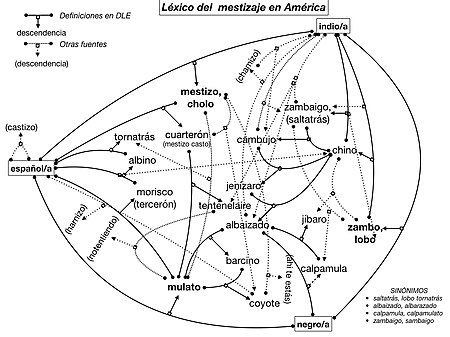
British Colonies and ex colonies in North America: whoever has more than one-eight of non-white blood is whatever the other race is.
Spanish colonies in Latin America: I'm gonna create a nomenclator of mixed races that is SO COMPLEX
39 notes
·
View notes
Photo

Vicente Albán (Ecuadorian-born Spanish, 1725 - unknown)
Inscribed is “Señora principal con su negra esclava,” “Lady with her female black slave,” 1783
Vicente Albán is noted for his idealized paintings of indigenous (Yumbo people) and Hispanic Criollos (people of Spanish descent born in the colonies). Exploring Colonial Hispanic-American culture, he was commissioned by José Celestino Mutis, who wanted to highlight the local society, flora and fruit.
-
In August 1518, King Charles I authorized Spain to ship enslaved people directly from Africa to the Americas. The Spanish colonies in the Caribbean were among the last to abolish slavery. While the British abolished slavery by 1833, Spain abolished slavery in Puerto Rico in 1873. On the mainland of colonies, Spain ended African slavery in the eighteenth century.
-
There are no words to describe the horrors inflicted on the indigenous populations. The native peoples in Cuba were completely annihilated. They either died enslaved in the mines or were hunted and killed by the Spanish in the mountains. Some natives themselves jumped off the cliffs, knowing that it would be a preferable fate than being caught by a Spanish soldier.
In 1634, the Spanish killed 50,000 Arawaks and captured their chief Hatuey. Before burning him alive, a Christian priest urged him to accept Jesus so his soul might go to heaven rather than hell. Hatuey replied, if heaven was where Christians went, he would rather go to hell.
#eurocentric culture#spanish art#hidden histories#european art#colonies#american colonies#world history#american history#spain#spanish#colonial history#hatuey#arawaks#indigenous#indians#art#spanish colonies#fine arts#neoclassical art#history#historical#know your history#christian#christianity#Christendom#catholic#catholicism#cuba#cuban history#black slavery
69 notes
·
View notes
Text
#caribbean carnival#carnival roots#caribbean history#carnival culture#carnival takes#catholicism#france#catholic presence#canboulay#trinidad & tobago television#dominican republic#spanish colonies#1783 cedula of population#oppression#french colonies#dominica#st lucia#grenada#martinique#intra caribbean migration#cape verde#portuguese#mardi gras#haiti#modern carnival
0 notes
Text
The Spanish surnames of many Filipinos have often misled foreigners here and abroad, who are unaware of the decree on the adoption of surnames issued by Governor-General Narciso Clavería in 1849. Until quite recently in the United States, the Filipinos were classified in demographic statistics as a “Spanish-speaking minority,” along with Puerto Ricans, Cubans, Mexicans, and other nationals of the Central or South American republics. The Philippines, as is well known, was a Spanish colony when Spain was mistress of empires in the Western Hemisphere; but the Americans were “hispanized” demographically, culturally, and linguistically, in a way the Philippines never was. Yet the Spanish surnames of the Filipinos today—García, Gómez, Gutiérrez, Fernández—seem to confirm the impression of the American statistician, as well as of the American tourist, that the Philippines is just another Mexico in Asia. Nor is this misunderstanding confined to the United States; most Spaniards still tend to think of “las Islas Filipinas” as a country united to them through the language of Cervantes, and they catalogue Philippine studies under “Hispano-America.” The fact is that after nearly three-and-a-half centuries of Spanish rule probably not more than one Filipino in ten spoke Spanish, and today scarcely one in fifty does. Still the illusion lives on, thanks in large part to these surnames, which apparently reflect descent from ancient Peninsular forbears, but in reality often date back no farther than this decree of 1849.
Somehow overlooked, this decree, with the Catálogo Alfabético de Apellidos which accompanied it, accounts for another curiousity which often intrigues both Filipinos and foreign visitors alike, namely, that there are towns in which all the surnames of the people begin with the same letter. This is easily verifiable today in many parts of the country. For example, in the Bikol region, the entire alphabet is laid out like a garland over the provinces of Albay, Sorsogon, and Catanduanes which in 1849 belonged to the single jurisdiction of Albay. Beginning with A at the provincial capital, the letters B and C mark the towns along the coast beyond Tabaco to Tiwi. We return and trace along the coast of Sorsogon the letters E to L; then starting down the Iraya Valley at Daraga with M, we stop with S to Polangui and Libon, and finish the alphabet with a quick tour around the island of Catan-duanes. Today’s lists of municipal officials, memorials to local heroes, even business or telephone directories, also show that towns where family names begin with a single letter are not uncommon. In as, for example, the letter R is so prevalent that besides the Roas, Reburianos, Rebajantes, etc., some claim with tongue in cheek that the town also produced Romuáldez, Rizal, and Roosevelt!
Excerpt from the 1973 introduction to Catálogo de Alfabético de Apellidos by Domingo Abella
1K notes
·
View notes
Text

This 1926 Spanish Colonial in Los Angeles, California looks like a fairy tale house. 3bds, 4ba, $2.2M. Love everything but the taxidermy.
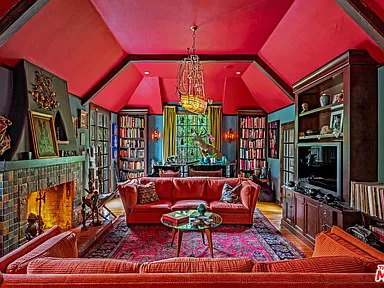

Isn't this amazing? The red ceiling is a stunner. Love the fireplace and shelving, too.
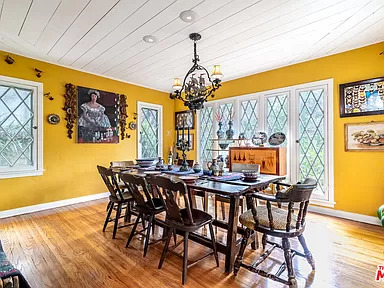
It has a large dining room with fairy tale cottage windows.


The kitchen is large, and look at the cute Dutch door. Love the floor.
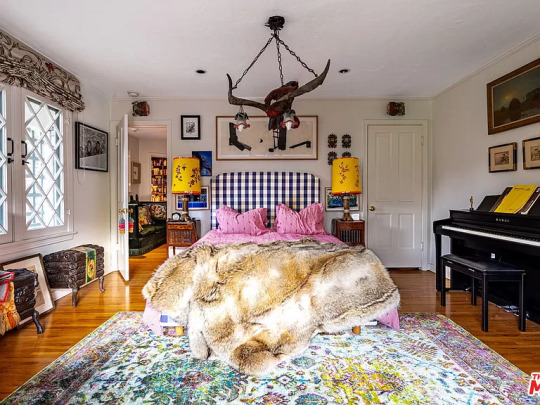
The primary bedroom is so cozy. It doesn't look big enough to fit a piano, but it's deceiving.
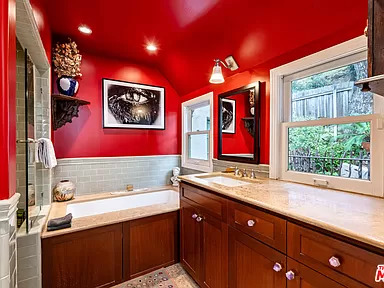

You don't see many red bathrooms. Very nice. I can't decide if I like the uneven tile look.

Cute alcove is a great place to read, but the small desk looks good in here.

Absolutely love the library. It reminds me of a treehouse.

Bedroom #2 is a child's room. It's pretty big, b/c it accommodates some large furniture pieces.

This bath is cool- burgundy subway tiles.
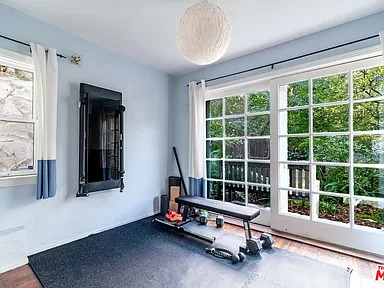
Bedroom #3 with large sliders to the garden, is being used for an exercise space.

The house has several Juliet balconies and a turret tower.

This is a lovely roof top deck.

The garden is so pretty.

Interesting waterfall and pond.
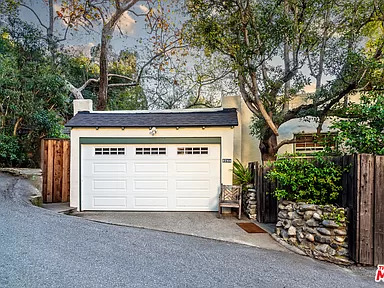
Not much of a driveway, but there's a double garage. The property is very angular and small, 5,299 sq ft lot, but it's in the expensive Hollywood Hills.
211 notes
·
View notes
Text
People declaring the Pope should excommunicate Joe Biden for genocide has me like??? Bro...what do you think the Catholic Church was built on...
#Pope Francis did call for a ceasefire and actually used the word ''cease'' even if he used waffly both-sides language#he's also been pretty progressive about recognizing and apologizing for the church's role#in the Canadian First Nation's and Rwandan genocides#but that's still bare minimum#and there was that whole deal with the Catholic Church helping save Jews in the Holocaust#but trying to help the people you helped victimize in the first place shouldn't be counted IMO#certainly doesn't erase centuries of Jewish persecution#xtianty#colonialism#Spanish colonialism#Portuguese colonialism#genocide#genocide Joe#free palestine#knee of huss
274 notes
·
View notes
Text
Stunning Codex Documenting Aztec Culture Now Fully Digitized
The 16th-century “Florentine Codex” offers a Mexican Indigenous perspective that is often missing from historical accounts of the period.
{read}
#tiktok#article#Florentine Codex#16th century#nahuatl#aztec#hyperallergic#colonialism#colonization#genocide#spain#digital archives#art#art history#language#spanish conquest#indigenous#mexico#history
262 notes
·
View notes
Photo
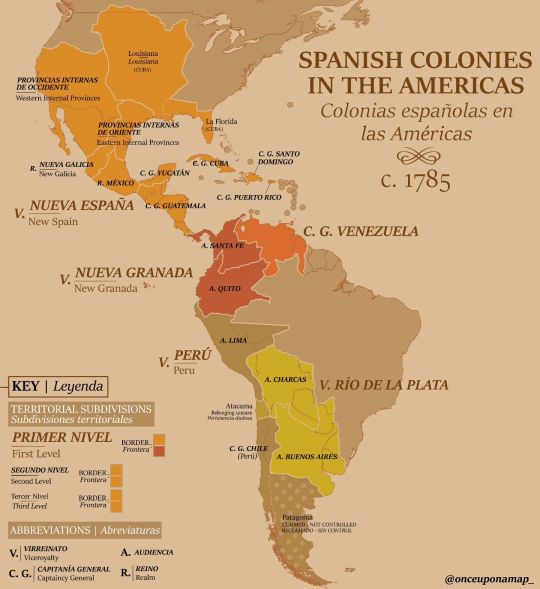
Spanish Empire, c. 1785.
by onceuponamap_
109 notes
·
View notes
Text


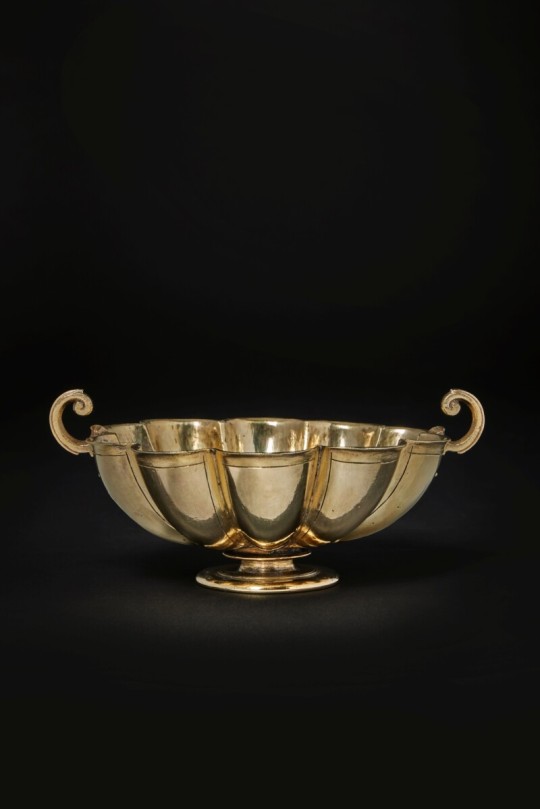
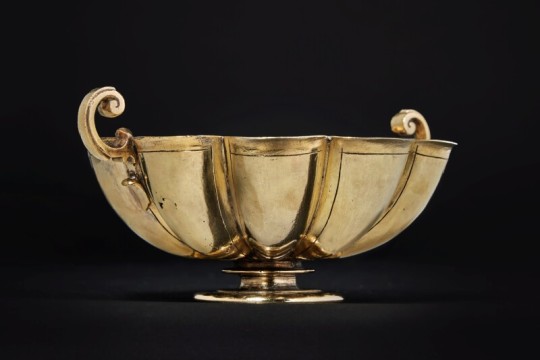
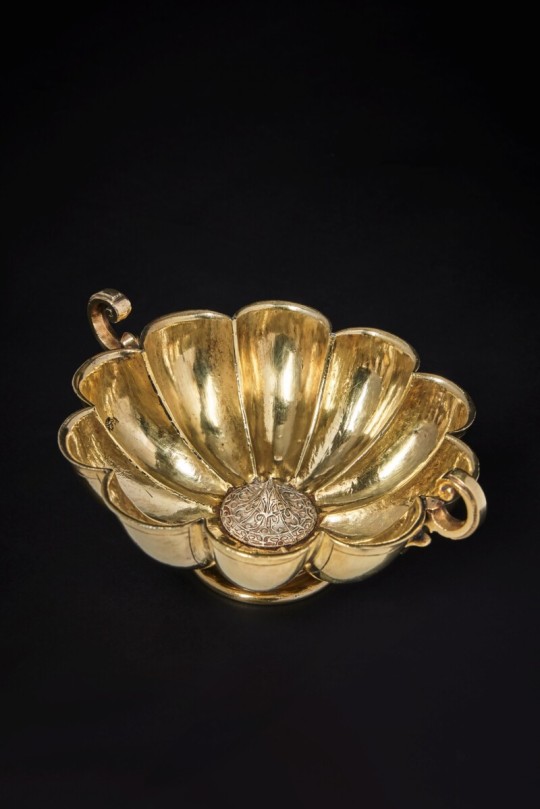
A Rare Spanish Colonial Silver-Gilt Two-Handled Cup from the Atocha Shipwreck
Bogotá, Colombia, circa 1620
Nuestra Señora de Atocha was a Spanish treasure galleon and the most widely known vessel of a fleet of ships that sank in a hurricane off the Florida Keys in 1622. At the time of her sinking, Nuestra Señora de Atocha was heavily laden with copper, silver, gold, tobacco, gems, and indigo from Spanish ports at Cartagena and Porto Bello in New Granada (present-day Colombia and Panama, respectively) and Havana, bound for Spain. The Nuestra Señora de Atocha was named for the Basilica of Nuestra Señora de Atocha in Madrid, Spain. It was a heavily armed Spanish galleon that served as the almirante (rear guard) for the Spanish fleet. It would trail behind the other ships in the flota to prevent an attack from the rear.
Much of the wreck of Nuestra Señora de Atocha was famously recovered by an American commercial treasure hunting expedition in 1985. Following a lengthy court battle against the State of Florida, the finders were ultimately awarded sole ownership of the rights to the treasure.
#A Rare Spanish Colonial Silver-Gilt Two-Handled Cup from the Atocha Shipwreck#Bogotá Colombia#circa 1620#Atocha#Nuestra Señora de Atocha#Spanish treasure galleon#treasure#shipwreck#silver#ancient artifacts#archeology#archeolgst#history#history news#art#antique
68 notes
·
View notes
Text

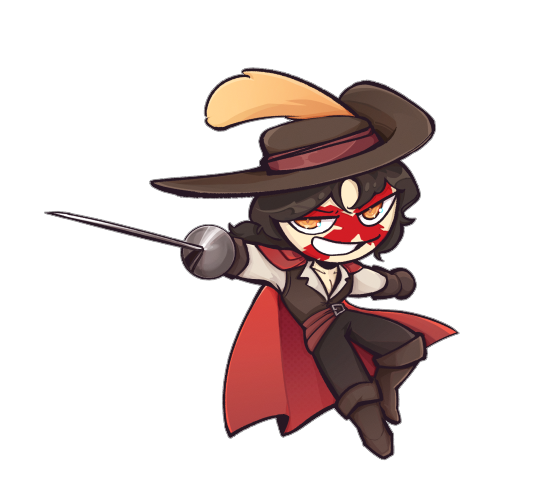

fanart chibis :D
designs by sucker7puncher (instagram)
#art#illustration#digitalart#digitaldrawing#countryhumans#countryhumansart#countryhuman#countryhumansamerica#countryhumansspanishempire#countryhumansspain#countryhumansthirteencolonies#countryhumans13colonies#artwork#digitalartwork#digitalillustration#countryhumans art#countryhumans america#countryhumans spanish empire#countryhumans spain#countryhumans thirteen colonies#countryhumans 13 colonies#digital artwork#digital illustration#digital drawing#digital art#countryhumans usa#countryhumansusa
72 notes
·
View notes
Text
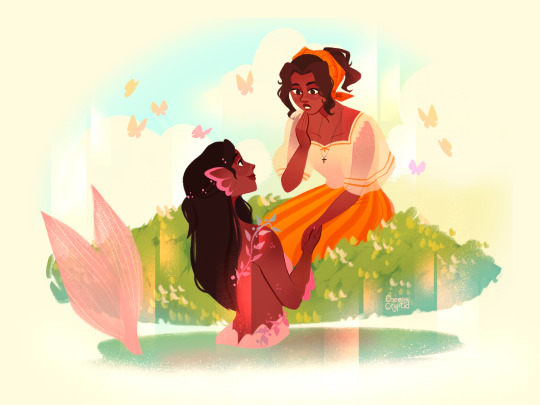
I really crammed mermay this year didnt i? 😭
Anyway enjoy two cuties finding love in the middle of the 1800s in the Philippines 💖
#mermay#mermay 2022#mermaids#artists on tumblr#digital art#digital illustration#oc#original characters#philippines#spanish colonial period#southeast asia#filipino#mermaid girlfriend#lgbt#pride#wlw#sapphic#nik's art#merfolk#fantasy#monster x human#1800s
2K notes
·
View notes
Photo

Nicolas de Largillière [French. 1656 - 1746]
Portrait of a Woman and an Enslaved Servant. 1696
-
The notion that there were no slaves in France was readily extrapolated from the legal code promoted by the minister of finance, Jean-Baptiste Colbert, whose portrait hangs in this gallery. But exceptions abounded, particularly for families with wealth derived from the slave trade between France and its colonies. This portrait is an explicit document of the reality of a societal structure based on theories of pseudoscientific racism formulated in government-sanctioned academies: a white woman clad in resplendent silk dominates, her scale and placement constructed to inspire reverential admiration, while a Black child wearing a hinged metal slave collar is positioned subserviently to her side. His pictorial equation with the dog, a symbol of fidelity, alludes to enslavers’ fantasy of a natural order of racialized hierarchy.
#art#history#france#french#Nicolas de Largillière#portrait of a woman and an enslaved servant#1600s#fine art#mediterranean#art history#spain#portugal#greece#albanija#the balkan#the baltics#oil painting#french colonies#spanish colonies#portuguese#portuguese colonies#dutch colonies#the americas#the west indies#western civilization#history of the world#europa#caucasian#society#nobles
24 notes
·
View notes
Text
I've started What The River Knows and maybe it'll change but my main issue currently is the implication that it's totally ok when the protagonist and her parents engage in 19th century archaeology in Egypt like babes they are not special! All that shit was unethical please don't pretend this is chill!!!
#the protag has already been snooty about the britsh empire which would be fine were she not spanish in argentina like girlie#you tell us you're very rich and your grandparents moved there from spain you are also the remaining ruling class of a former colonial power
54 notes
·
View notes
Text
Asian slaves, indigenous Americans, and identity in colonial era Mexico
The Spanish Philippines had a diverse slave population for local labor and export, including Filipino Indians [i.e. natives; indios], Muslim war captives (moros), and foreign slaves from as far away as Portuguese India.
… Upon their arrival, chino slaves [i.e. any Asian slave, not just Chinese] were absorbed by the urban economy of Mexico City, where they mainly worked as domestic servants or in textile mills (obrajes) … For their part, working in the city provided chinos with some possibilities for manumission. Chinos in domestic service were especially apt to embrace the limited opportunities available to them and to experience some social mobility. In the obrajes, chinos had few of the freedoms given to domestic servants, but they did benefit from government oversight of the industry. During official visits, chino slaves appealed for protection from overt exploitation by claiming that they were Indians (even if they were from Portuguese India). Remarkably, visiting inspectors listened to their complaints, and they often responded by liberating individual chinos under the assumption that they were indeed native vassals and could thus not be held in bondage. The overall experience of chinos in the viceroyal capital confirms the benefits of living close to the center of colonial power.
The presence of free indigenous immigrants from the Spanish Philippines in Mexico reinforced the idea that all chinos were Indians. The complex governing structure of colonial Mexico involved two republics or political communities (the república de indios and the república de españoles); this organization separated the indigenous majority from everyone else to facilitate the collection of tribute and the ministry of the Catholic Church … [N]ative immigrants from the Philippines purposely sought to confirm their membership in the Republic because corporate status provided personal advantages. They asked to be tallied in tribute rolls in Mexico to benefit from concomitant privileges, such as trading rights and legal representation through the General Indian Court. At the same time, free Filipinos were frequently confused with chino slaves - a situation that had serious consequences for Filipinos' relations with colonial institutions and enslaved individuals. Some immigrants resented having their indigenous identity questioned and sought to maintain a sense of their Indian-ness by keeping their distance from chino slaves. The majority, however, expressed solidarity with chino slaves. Filipino artisans, for example, took on chino slaves as apprentices and taught them marketable skills. Similarly, Filipino traders incorporated chinos into their own credit networks to facilitate self-purchase.
Individual chinos who were manumitted also embraced an Indian identity, regardless of whether they were from Goa, Macau, or other places in South and Southeast Asia. In this way, chinos challenged official attempts to define them solely as former slaves. Instead, they sought to join the free republic. The possibility for this kind of social integration caused widespread concern among slave owners. To defend their property rights, masters started to brand chino slaves on the face, rather than on the chest or arm as they did with Africans, in order to dissuade them from fleeing and "passing" as free Indians. This horrifying development shows that Indian communities welcomed runaway chino slaves and, by extension, that slave owners sought visible markers of their slaves' status.
Excerpt from the Introduction to “Asian Slaves in Colonial Mexico: From Chinos to Indians” (2014) by Tatiana Seijas
104 notes
·
View notes
Text
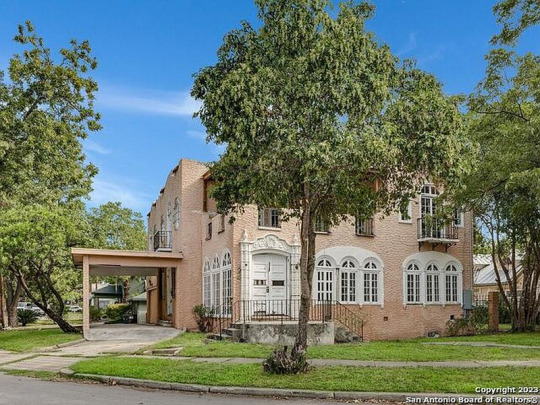
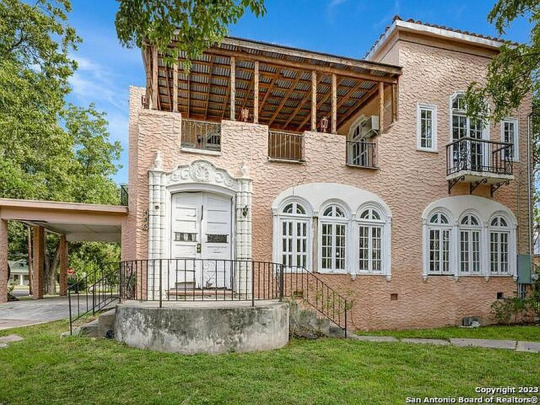
The real estate ad says this gorgeous 1927 Spanish Colonial in San Antonio, Texas is a great opportunity to restore an historic home. But, I hope it doesn't mean that someone will come along to gut and modernize this nearly 100% original home. I would rather just repair and paint the amazing 4bd, 2ba, 3.5ba building and leave the architecture as it is. Let's go thru it.

Isn't this entrance hall fabulous? Original double doors that need refinishing, floral tile floors and wrought iron inserts on the windows, plus wrought iron gates. Also an original light fixture and door chime.


The dramatic, huge iron gates open to the great room.
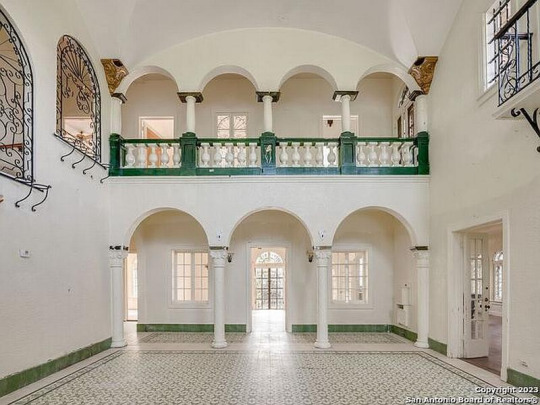
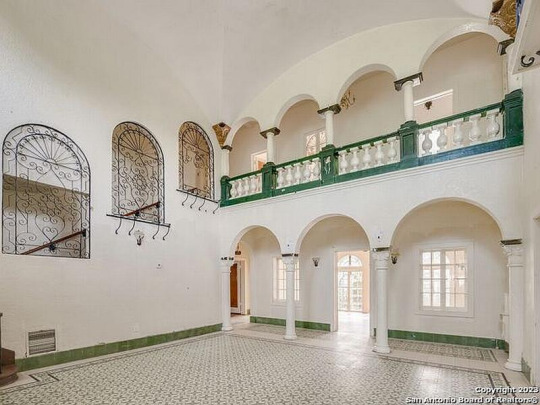
Behold the great room. Original tile floors, columns, arches, a balcony, and a mezzanine. The wrought iron on the left show the stairs. And, the gold corbels in the corners are so beautiful.


These 2 photos show the umbrella shape of the incredible ceiling with corbels in each corner. I can picture someone taking all the iron down and lowering the ceiling, making it flat.

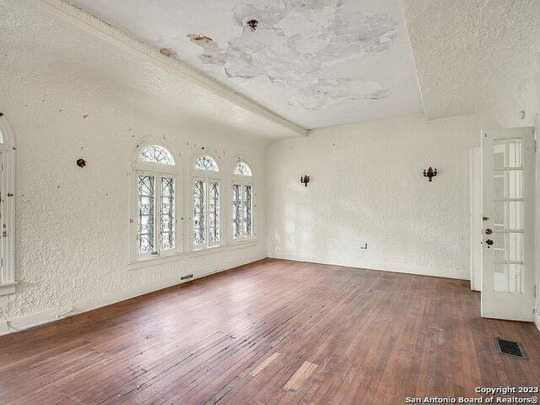
Off the great room, they must've had a game room and it looks like they left a vintage pool table. The ceiling needs repair, the walls need touch up and paint. The floor could use a sanding and refinish.
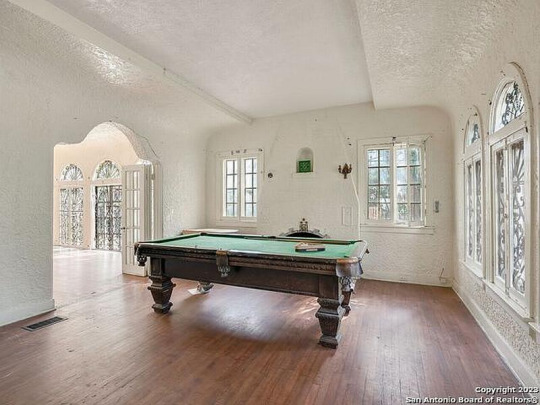
The wonderful chunky old pool table is hiding the fireplace, and there's a fabulous one behind it. Love the curve and shape of the ceiling.
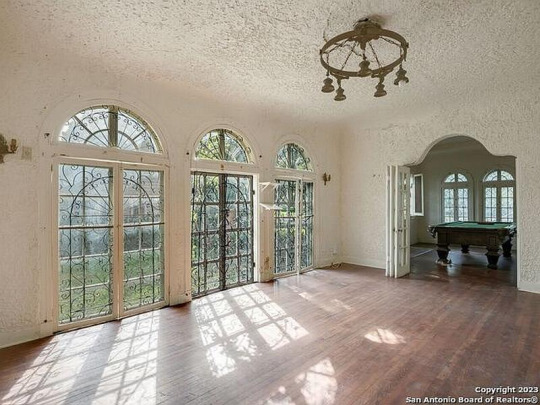
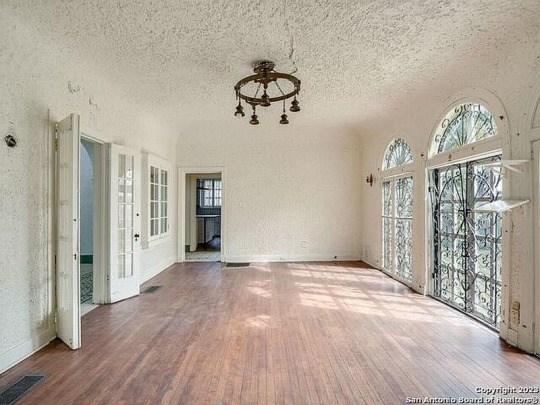
Off the game room is a dining room. Again, it will need a few tweaks. But, the doors, wrought iron, etc., are in good shape. The brass fixture is original but may have to be rewired and polished.
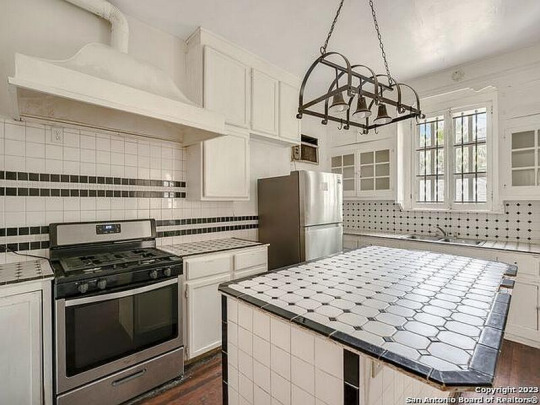
The owners put in new appliances but I would sell them, then buy the retro look ones.
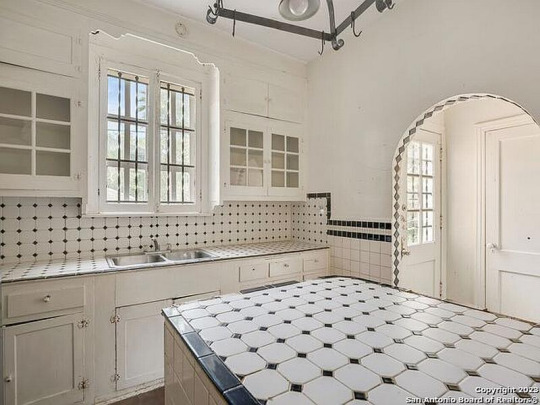
I love the kitchen. It needs some tile repair and stuff, but it's mostly original, especially the cabinets and the range hood. You know someone's gonna gut this and completely modernize it.
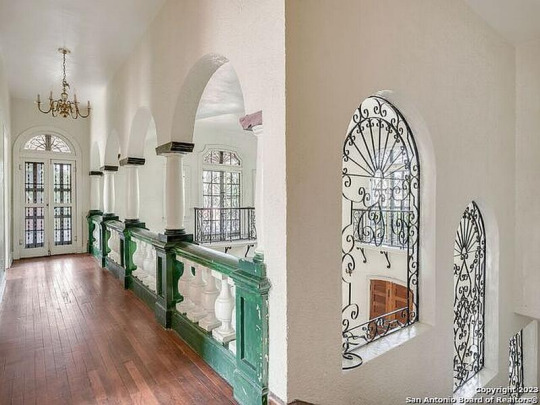
Oh, damn, looks like that one iron inset is broken. Up here on the mezzanine the beautiful railing has to be repainted or stripped.

It's so nice up here.

Looking down at the great room. Love this house so much.
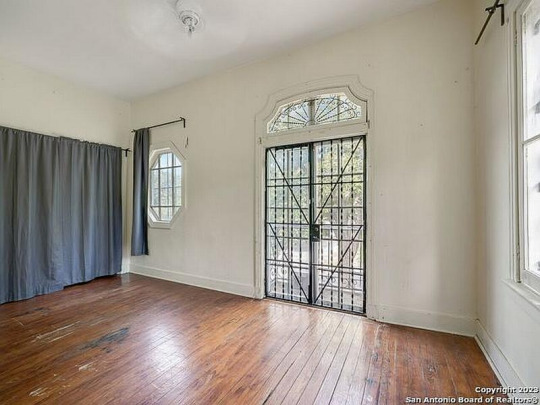
This must be a bedroom and that's probably the "closet" behind the drapes. Look like there's a balcony, too.

Cute smaller room.
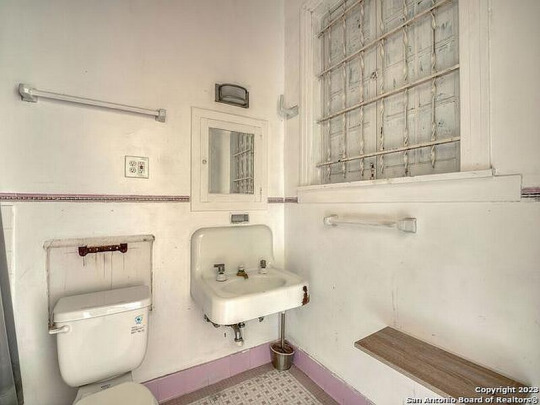
Look at this wonderful vintage bath. Toilet's new, but you can see the outline of the old one. There's an original sink and medicine chest.

And, this would be the 3rd bd.

Oh, look at this- original tub. The pedestal sink looks like a good repro and at least some of the tile is original. There's also a shower on the right.

I would say that this large room with the fireplace is the primary bedroom. Beautiful.


What a great big outdoor space to entertain. It's covered and on each wall is a lantern light- can you imagine how pretty they would look at night?
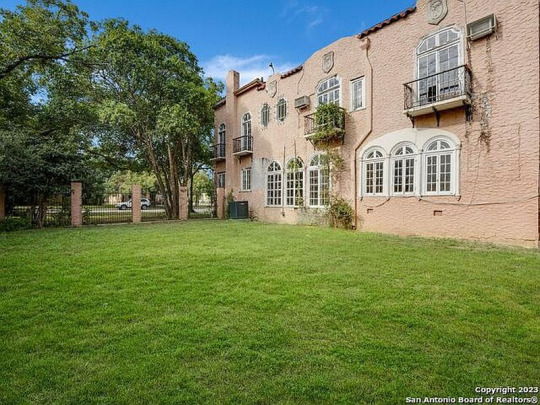
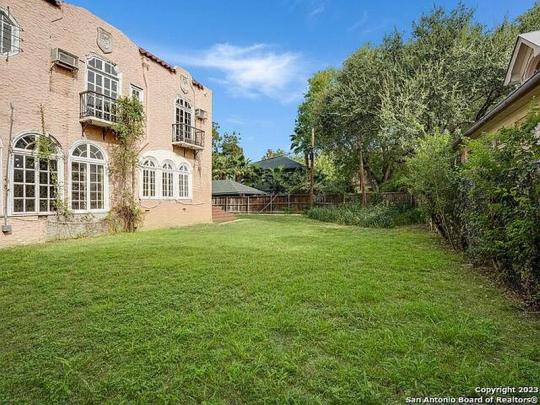
Lovely fenced yard. You can see the bedroom balconies, too. Could probably fit a pool back here. The lot is 9,060 sq. ft.

From here you can see that it has a port cochere and a garage. Also, above is that wonderful covered deck.
138 notes
·
View notes